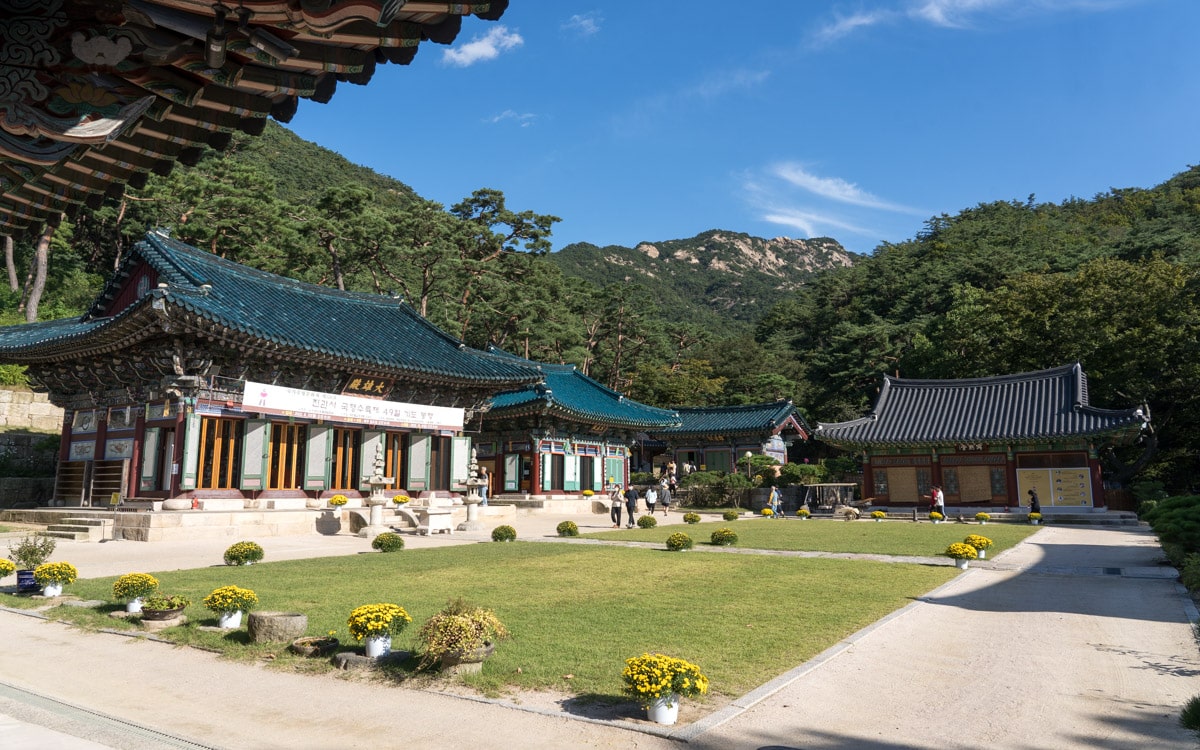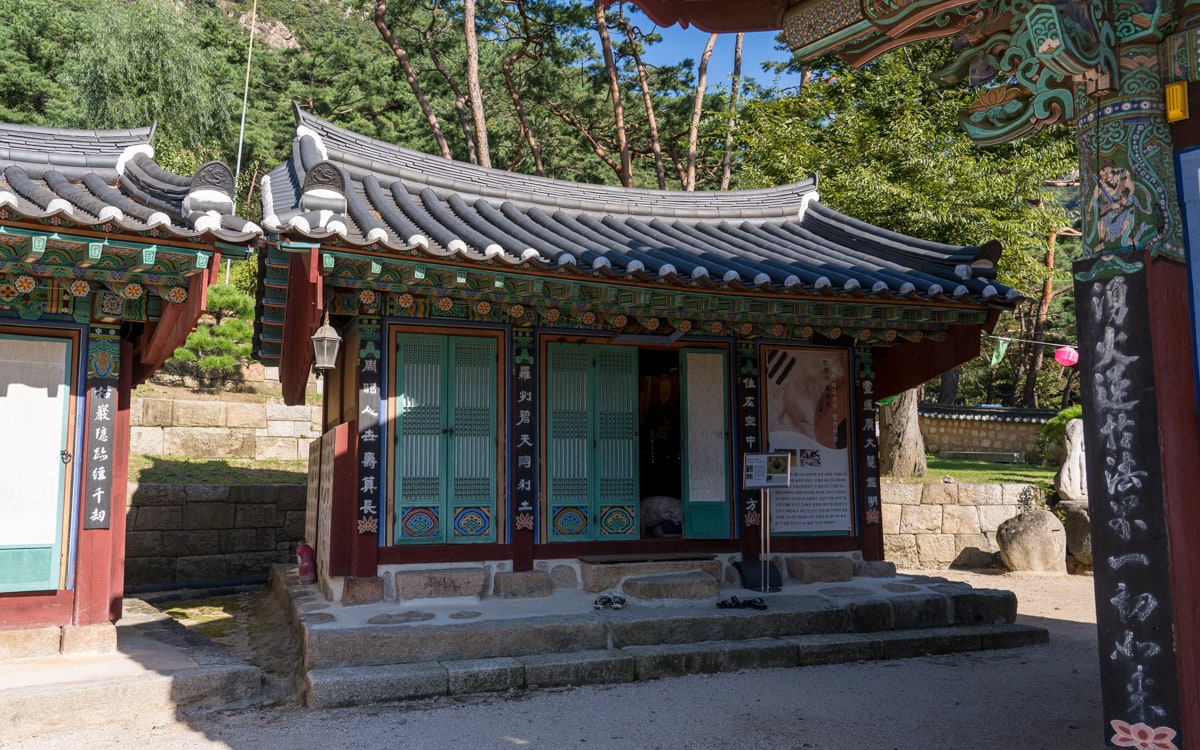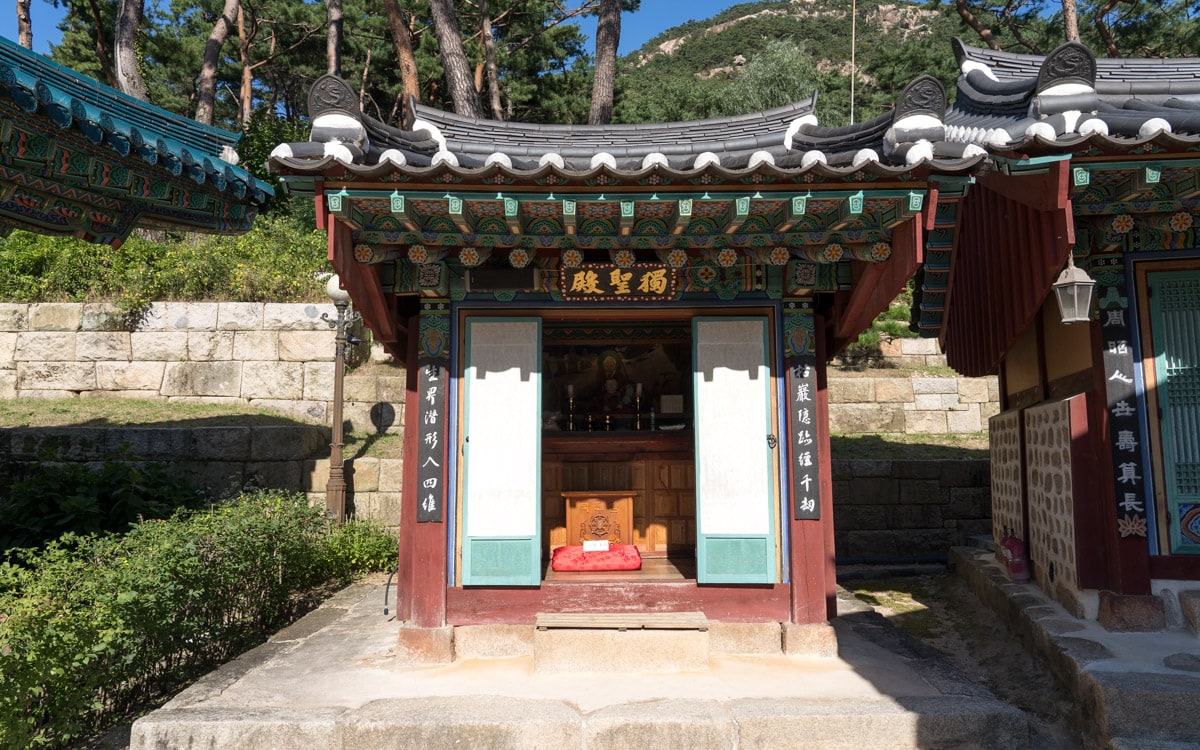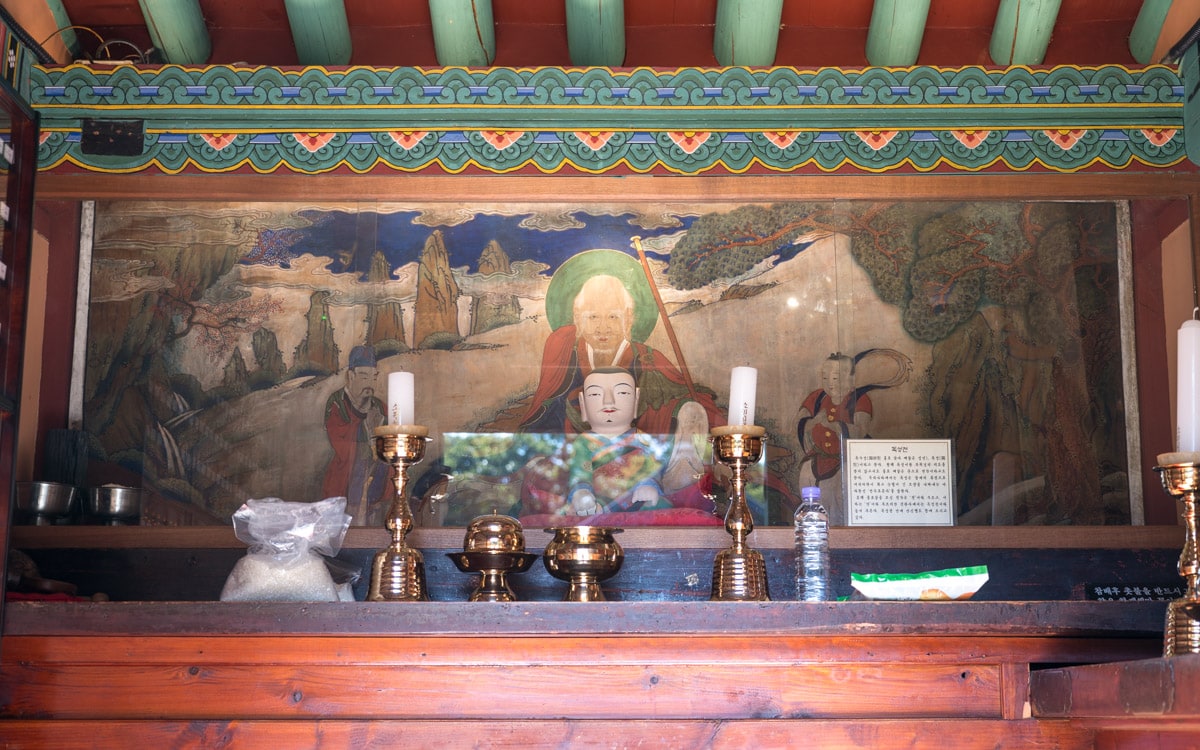
Jingwansa Temple is a Buddhist temple located in Bukhansan National Park on the western outskirts of Seoul, not far from Eunpyeong Hanok Village. Jingwansa is one of four temples considered to be the most prestigious in Seoul. The others include Bulmasa Temple in the east, Sammaksa Temple in the south, and Seunggasa Temple in the north.
Jingwansa Temple, which was built to replace Sinhyeolsa Temple, was constructed in 1010 during the rule of King Hyeonjong of the Goryeo Dynasty. Hyeonjong, who was the 8th ruler of the Goryeo dynasty of Korea from 1009 to 1031, was a grandson of Taejo of Goryeo.
Jingwansa Temple was built by Hyeonjong in appreciation of Buddhist priest Jingwan, who had saved the king’s life during his ascension to the throne. The temple stands as a tribute to Jingwan’s heroism and unwavering devotion to the king.
During the Joseon Period (1392-1910), Jingwansa Temple served as a venue for the state-sponsored Land and Water Ceremony (Suryukjae). Sagadokseodang, a government-run library, was established here by King Sejong during his reign as the fourth Joseon king from 1418 to 1450. The library served as a space for Jiphyeonjeon scholars and intellectuals to visit and engage in reading activities. They also studied the Korean writing system, which today is known as Hangeul.
The temple grounds suffered extensive damage during the Korean War from 1950 to 1953, with only a handful of buildings managing to survive the devastation. Starting in 1963 and led by the head monk of the temple, a 30-year reconstruction effort was initiated to restore the temple grounds. Although it was a lengthy process, many of the temple buildings were eventually restored to their previous condition.
At Jingwansa Temple, visitors also have the opportunity to participate in a Templestay program. This program and cultural experience offers a glimpse into the history of Korean Buddhism and the daily life of Buddhist practitioners.
Table of Contents
Chilseonggak Hall

Constructed in 1907, Chilseonggak Hall enshrines the deity Chilseongsin, a significant figure in Korean Buddhist folklore and believed to be the god of fortune and protector against calamities. During the early 20th century, Chilseonggak Hall underwent renovations. Despite being damaged during the Korean War, the hall was one of the few structures to survive the conflict.
Chilseonggak Hall houses a Buddhist altar situated close to the rear wall, a seated stone Buddha statue (Seoul Cultural Property Material No. 10), and a Buddhist painting (Seoul Tangible Cultural Property No. 147). The painting depicts Vairocana Buddha (Chiseonggwang Yeorae), considered to be a central figure in many East Asian Buddhist traditions. The painting also depicts Chilseongsin and other sage kings.
Restoration work on Chilseonggak Hall in 2008 led to the discovery of an old Taegeukgi (Korean national flag) and anti-Japanese newspapers. This discovery revealed that the temple was a base for the Korean Independence Movement during Japanese colonial rule (1910-1945).
Dokseongjeon Hall

The construction of Dokseongjeon Hall in 1907 was made possible with the help of four court ladies and two civilian couples. They provided the funding for the project while construction was carried out by a skilled monks.
Dokseongjeon Hall enshrined Dokseong, also known as Naban jonja. Dokseong was an arhat who became a monk to save the public right after Sakyamuni’s entry into Nirvana. Dokseong is a figure in Korean Buddhism who embodies the ideal of detachment and solitary practice. He is often depicted as a Daoist-style hermit and serves as an ideal for those who seek to follow a path of solitude and detachment.

The interior of the hall features a Buddhist altar, a statue and painting of Dokseong, and a Buddhist painting known as Sansindo. Sansindo often depict the gods or spirits believed to reside in the mountains. These paintings often feature images of various deities associated with the mountains. The painting in this hall (Seoul Cultural Property Material No. 12) from 1907 shows Naban Jonja and Dongja seated, with Mount Tiantai in the background. The statue of Dokseong (Seoul Cultural Property Material No. 11) is a small pottery figurine that measures only 37 cm in height.
Jingwansa Temple Hours
24 hoursAdmission
FreeAddress
73 Jingwan-gil, Eunpyeong-gu, Seoul, South KoreaGPS Coordinates: 37.638168, 126.946656
Map
Additional Resources
Book Recommendation: Fodor’s Seoul
While The Seoul Guide provides plenty of information about traveling to Seoul, sometimes it helps to bring a book with you on your journey. Want to visit Gwangjang Market, hike Bukhansan National Park, visit an ancient palace, or sing karaoke all night long? The book I always recommend is Fodor's Seoul, which provides expert recommendations including sights to see, restaurant reviews, maps, and essential trip-planning information for everything related to Seoul.
Learn more about Fodor's Seoul
Rakuten
Save money while exploring Seoul with Rakuten's cashback program. By booking hotels through Rakuten, visitors can earn cashback rewards and enjoy significant savings. Exclusive partnerships and deals make stays in Seoul more affordable, freeing up funds for attractions, dining, and other experiences. I use Rakuten for cashback on all of my hotel stays in Seoul.
If you sign up using the link below, you will get $30 cashback after your first purchase over $30.
Klook
Klook is a reliable online platform offering discounted tickets and reservations for attractions and services in Seoul. It covers theme parks, museums, transportation, WiFi, tours, and more. Travelers can save time and money by booking through Klook's user-friendly interface, with secure transactions and helpful customer support.
If you sign up using the link below, you will get $5 off your first order.
Learn more about KlookLast Updated on Apr 24, 2023